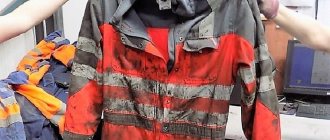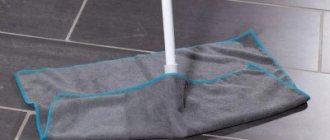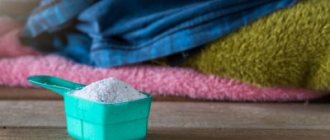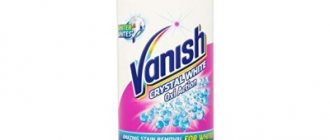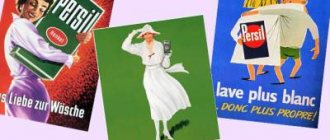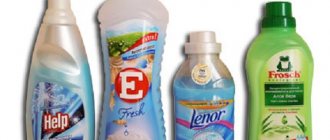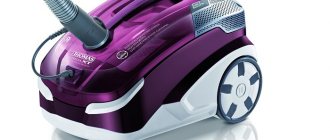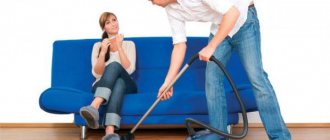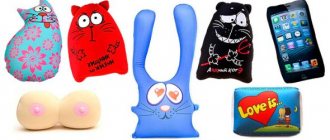Cleaning is a broad concept that includes many activities. It can be supportive and general, dry and wet.
Depending on the object, the set of measures and the frequency of its implementation differ.
Read the article about what types of cleaning there are, how it is carried out in an apartment, at an enterprise, in medical institutions and more.
Industrial premises: types of cleaning
The areas of such premises are usually large and their ceilings are high. In addition, they are filled with a large amount of equipment and shelving, so their cleaning has specific features. The cleaning process is classified according to different parameters. Cleaning by type of use of products is:
- Dry – does not require much time and is easy to carry out. You need to sweep the floors, remove dust and remove large debris.
- Wet – performed when there are large deposits of dust on surfaces and heavily soiled floors. There are different types of wet cleaning: using detergents, cleaning agents or disinfectant solutions.
- Weekly cleaning is the simplest and least expensive. It involves regularly maintaining cleanliness.
- General – production premises need to be systematically cleaned. The types of general cleaning are different, depending on what needs to be cleaned and disinfected: walls, shelving, windows.
- Cleaning after completion of repairs is a mandatory procedure before resuming production processes. It is important to take out large debris and remove repair dust, and then thoroughly disinfect everything.
Special requirements for inventory storage
After cleaning, be sure to disinfect equipment
Storage standards for cleaning equipment depend on the place of use. There are no specific requirements at home. As for public places, in connection with sanitary and hygienic requirements there are rules for storing equipment:
- All cleaning material should be labeled and marked in a bright color.
- A separate room should be allocated for storing carts, buckets and mops. For large productions - with an area of no more than 4 square meters and a height of 1.5-2 meters.
- Washing machines for attachments and rags are located in the same room.
- After putting things in order, all equipment involved is disinfected, washed and dried.
- To clean walls and floors, use separate devices and store them separately from the rest.
- The vacuum cleaner is placed in a closed and dry cabinet.
The main recommendation for storing equipment is compliance with sanitary and hygienic requirements, as well as convenient location. Such storage rooms are available in every public institution. Strict compliance with the rules is observed in medical, restaurant, educational and other buildings.
Note! Proper use and storage of cleaning equipment will save not only time, but also costs on detergents and personnel. https://www.youtube.com/embed/zR2dpGmSPGs
Cleaning of the apartment
For every person, home is his little world. Here he lives: he is engaged in cooking, hygiene procedures and all other processes necessary for his life. Therefore, the house will not be spotlessly clean and sterile, but maintaining order in it is the task of every housewife. This can be achieved by constant cleaning of the apartment, the types of which vary.
Cleanliness with a philosophical approach
"Seiriseiton": order based on psychotype
The technique was first presented in the publication “Life without things: how to liberate the soul and room. But also the basic idea is the desire to free the house from “extra” things. The main feature is in the psychoanalysis of actions. To begin with, the author proposes to analyze the very cause of the disorder. The owners of the house are divided into 6 psychotypes indicating a specific problem for the owner. The author believes that each of them requires an individual approach, paying attention to the weaknesses of each. For example, “homebodies with children” should leave part 5 of the compartment in the closet unoccupied. Working ladies should better focus on the hallway and areas with Wi-Fi access. Shopping lovers need an outside perspective. And older housewives are not advised to start until they get enough sleep.
Advantages:
- Unusual approach;
- step by step action.
Flaws:
- A call not to think about the future.
Marie Kondo's cleaning method
Its main principle is decluttering not only the home itself, but also your inner self.
- point: clean up the mess in one go. Marie is against the daily routine. In her opinion, this contributes to demotivation, since the final result is almost invisible. A sudden change is more effective. Allowing you to get rid of the habit of delaying cleaning. But the author recommends putting your home in order only by yourself; close people often distract you from what is happening, which affects this action, making it less fruitful.
- the condition states that you should not feel sorry for shabby clothes that simply fill up the space.
- At the point we lay out everything according to its intended purpose. For strict separation by type, it’s a good idea to put small items in several piles. And then carefully place them in the designated place. This helps you quickly remember what is where. The same applies to clothes.
- encourages you to clean out your closet. To save space, it is recommended to roll everything up like a roller and fold it in rows. But designer items should be hung on hangers. Place hosiery, ties and underwear in separate containers at eye level.
- The article is about finding boxes for small items and documents. All passports, policies and other important papers should be placed in a separate file.
- just keep it clean
According to the mentor, a mess in the home creates a repulsive appearance that negatively affects the family, becoming a frequent cause for quarrels.
magical cleaning Kon Mari
Advantages:
- Affordable style;
- practical advice;
- the understanding of life changes;
- simple recommendations.
Flaws:
- Most of the book is the author's reasoning;
- some methods are too radical;
- materialism;
- there are shortcomings in the text.
General cleaning of the apartment
It is carried out, as a rule, once every quarter or six months, depending on the condition of the house. The work is planned in advance and carried out sequentially. Typically, general cleaning is left for spring or autumn. In the intervals between seasons, at the discretion of the owners, additional events of this plan are held. It happens that a significant event is planned in the family, many guests are invited to the celebration. Of course, the whole house must be cleaned to a shine.
General cleaning begins from the ceiling, for which all chandeliers and curtains are removed so that they do not create an obstacle when removing dust from the ceilings and walls. A dry brush is used for this job. Chandeliers are thoroughly washed, curtains are washed. Then all the closets are opened to ventilate and wipe dust from the shelves, on which the clothes are also rearranged. Books are removed from the cabinets, wiped with a dry cloth or vacuumed, and only then put back in their original place.
All family members do general cleaning. Someone will have to clean sofas and armchairs. If this is a country house, upholstered furniture is taken outside, dust is knocked out of it or vacuumed. Wood furniture with a varnished surface requires cleaning using special products.
Washing windows takes a lot of time. Liquids and polishes are used to clean glass. To wash the window sills, all flower pots are removed, and the plants themselves are thoroughly sprayed. At the end of the general cleaning, the floors in all rooms are washed.
What equipment and chemicals are used?
Any types of cleaning of office and common areas are carried out using special tools and materials. Their storage and use is regulated by SanPiN standards.
It is worth considering some products, for example, for the floor:
- Neutral floor cleaner Floor wash.
- LAVABI for flooring.
- Super Cleaner is a concentrated, alkaline, detergent for all waterproof surfaces.
To disinfect any surfaces:
- DESO disinfectant.
- Aqua Light, disinfection solution.
- Antibacterial liquid soap-foam Triclomed-foam.
To wash bed linen, towels and curtains:
- TEXAL LIQUIDO RIZZ, complex liquid product.
- Detex Gel Stain remover.
For dry cleaning of any carpets when cleaning office, common areas, as well as residential rooms:
- Colorfast Extraction Upholstery Cleaner.
- Prekleen Enzyme Soil Lifter.
For window glass and mirrors:
- Clean glass concentrate.
- Blue Window (Blue Window) washing.
For processing and polishing furniture and metal surfaces:
- Rapin MOLD.
- METASOFT is a stainless steel cleaner.
- Furniture cleaner and polish Torus.
The above preparations exist in different consistencies:
- liquid;
- powder;
- spray;
- cream.
Necessary special equipment for cleaning office and common areas, without which cleaning is impossible:
- polishing machines;
- professional vacuum cleaners with a washing function;
- professional vacuum cleaners with dry cleaning function;
- buckets and containers-trays;
- carpet cleaning machines;
- polishing machines;
- mops with attachments used for cleaning public and office premises;
- water distillers;
- brushes;
- rags, napkins;
- rubber gloves;
- sponges;
- brooms and dustpans;
- trash cans;
- stepladders stools.
You will also need service carts. They come in different sizes. Two-wheeled or four-wheeled. With plenty of shelves and stands.
Cleaning of offices every day
To keep your office space clean, it is important to do the following daily:
- Clean the surface of walls, floors, and doors from dust and dirt. Particular attention is paid to the type of coating in order to use the appropriate products.
- Wash baseboards with a damp cloth.
- Remove dust and stains from the railings if they are present in the interior of the room.
- Wash radiators and ventilation systems.
- Clean mirrors and related surfaces.
- Wipe furniture and workplaces of office employees.
General cleaning is carried out as needed. Usually the cleaner himself chooses a day and time that is convenient for him.
The most extraordinary methods
Clean with a beer taste
This type of cleaning, introduced by Nancy Mitchell, is controversial regarding health issues. Since it provides an intoxicating drink as the main cleaning agent.
Such a system allows you not only to perform unloved work with enthusiasm and in high spirits. It initiates a process similar to meditation, where you can simply relax while your hands perform routine actions. The main task is not to overdo it.
Advantages:
- Excellent cleaning product;
- the other half joins in with pleasure.
Flaws:
- You can get drunk.
Mortal cleaning or the Swedish approach from Margaret Magnusson
Don't be put off by the name. The basic idea that runs through the book is tidying up as a method of re-evaluating your entire life journey and attitude towards things. You can't take anything with you to the other side. And if you still have secret things in your stash that could sadden your loved ones, get rid of them without a twinge of conscience.
In the eyes of modern people, home is not only a place to sleep. And a real small world that turns into a place of power thanks to cleaning. It is no coincidence that one of the first pieces of advice relates to preparing the workplace. The difference from most standard methods is the recommendation to start sorting things out from “immense” rooms: pantries, secret rooms or basements. However, do not start your marathon by looking at old photographs, diaries or postcards that can drag you into a pool of memories.
Advantages:
- Current;
- bright idea;
- supply of material.
Flaws:
- Unusual style;
- a lot of thoughts from the author;
- excessive radicalism.
Cleaning of medical institutions
The patient’s recovery largely depends on cleanliness - the calling card of a medical institution. This is achieved through cleaning. Nosocomial, intestinal and surgical infections can be prevented by maintaining cleanliness.
Means for cleaning and disinfecting medical institutions ensure the death of bacteria, fungi, and viruses. They also have low toxicity and are therefore not dangerous to patients. Regardless of the profile of the medical institution, according to the standards, wet cleaning is carried out twice a day at certain hours.
Types of cleaning in medical institutions
Hospitals and clinics need special cleanliness, which must be constantly maintained. For this purpose, the following types of medical cleaning are used:
- Preliminary - it is carried out as soon as the working day begins. The purpose of such cleaning is to remove dust from all horizontal surfaces. This is done by a nurse using a rag, which is moistened in a disinfection solution. The nurse begins to wash the floors, after which the bactericidal lamp is turned on for one hour.
- The current one is the disinfection of instruments, material for dressings, as well as devices used to take blood from a vein. After this, the floor is washed and the lamp is turned on to destroy bacteria.
- Final – this type of cleaning is carried out at the end of the working day. All surfaces and walls in the room are treated up to the height of a person, the floors are washed, and bacteria are destroyed using a quartz lamp.
- General – it is held every week. A schedule is drawn up in advance. The time of the event is recorded in a journal. Medical personnel are provided with gowns, masks, caps, gloves and a rubber apron, clean wipes and disinfectants: “Diabak”, “Brilliant”, “Mistral” and others. They wash all windows, walls, doors, furniture, radiators, and equipment. Finally, the floors are washed and the quartz lamp is turned on for an hour. Then all surfaces are washed again with clean tap water.
Correct selection
Sweepers
When choosing cleaning equipment, you need to base it on the following factors:
- room area;
- amount of pollution.
In warehouses, industrial workshops, and shopping centers, special cleaning equipment is used, which has a wide range of capabilities and small dimensions. This is necessary in order not to disturb the silence during working hours, and also not to clutter the aisles. Office rooms need simple equipment: a mop, a rag, a vacuum cleaner and antibacterial liquid. Cleaning in hotels has been improved with equipment and cleaning products. The required cleaning kit includes:
- Wipes made using nanotechnology for cleaning any type of surface.
- Microfiber cloths with spin system.
- Bucket cart with wheels. Consists of a carriage containing 2 containers. One is intended for squeezing the mop, the second contains the solution. In addition there are compartments for storing additional tools.
- When cleaning public properties, disposable wipes are often used.
Equipment for cleaning premises is necessary in public institutions: gardens, clinics, catering establishments. This is due to increased sanitary and hygienic requirements.
Important! A lot of useful equipment has been developed for cleaning. Consultants in specialized stores will help you understand their purpose.
Territory cleaning: types
A person’s field of vision always includes the area that surrounds an office or residential building. It forms an impression of the property owner. An area with smooth paths, neat lawns, and beautiful flower beds is considered ideal. The rhythm of life in modern society does not tolerate delay, so office employees do not go out to clean the territory, as was customary in Soviet times. For this purpose, the staff of the organization or enterprise has people specially trained for this, who maintain the territory in order. If this is not provided for in the staffing schedule, turn to the services of professional firms. Types of cleaning according to the degree of mechanization are:
- Manual, for which it is enough to have simple devices: a broom, a rake, a shovel, a dustpan, a cart. This set of tools is used to clean a small area.
- Mechanized – performed when it is necessary to clean a large area. In this case, it is necessary to use heavy harvesting equipment, which includes a tractor, watering, sweeping, and snow removal machines.
Regardless of the type of cleaning and the area of the territory, the worker uses small equipment, such as a lawn mower, brush cutter, chainsaw.
Where to begin
No cleaning should take place without a detailed plan, this will save a lot of time. If you are not distracted by TV shows, talking on the phone or social networks, then you will need approximately 2–2.5 hours, freeing up the rest of the day for relaxing with your family and your favorite hobby. You can even set a timer, this will allow you to correctly determine the time required to clean one room.
Before starting the procedure, it is worth preparing everything carefully. Cleaning supplies - detergents, napkins, a vacuum cleaner, a basin, so as not to constantly run to the nearest washbasin.
You should take microfiber or faux suede cloths. And it is better to refuse materials such as gauze, old towels or old clothes. They may leave marks or threads on the surface.
To wash glass coatings, use special formulations with a delicate cleaning cloth. If you don’t have it, you can use yesterday’s newspaper, previously crumpled into a neat ball.
When getting started, do not neglect such protective equipment as silicone or rubber gloves; they will protect the skin on your hands from the chemical effects of detergents.
Technology to help
The march of history is inexorable, and what happens certainly affects the life of the common man. A lot of scientific achievements have appeared that have opened up even more opportunities for housewives. But, as before, improved washing machines, food processors with recently appeared multicookers play an important role. Such pleasant new items allow you to reduce time costs. Therefore, feel free to use them for your everyday marathon.
Cleaning in winter
Types of area cleaning vary depending on the season. In the winter season, the standard list of work includes the following:
- Clearing sidewalks during snowfall.
- Removing snow from roofs as needed.
- If there is no snowfall, sidewalks are cleared of drift snow once, twice or three times a day. The work should be carried out early in the morning. Small areas are harvested manually, while large areas are harvested using mechanization.
- From the sidewalk, the snow moves into a strip, which is called a tray strip and is located on the side of the road. The snow in the yard is raked to a place designated for its storage.
- When the internal driveways are cleared of snow, it is placed in heaps and stored along the roadway, on the side of the road. In the future, winter precipitation must be removed.
- If a coating of compacted snow has formed on the sidewalks and paths in the yard, it is cleared immediately using snow chippers.
- The chips are raked and stored in a designated place.
- If road surfaces become slippery, they are sprinkled with a mixture of sand and coarse salt at the rate of 0.2-0.3 kg per square meter of area. The work is carried out using a distributor.
Criterias of choice
Of course, the quality of the equipment is the quality of cleaning. However, it does not always make sense to take the most powerful devices.
Should be considered:
- Affordable budget. When distributing finances, we must not forget about small but necessary equipment (gloves, gowns, rags for mops, etc.)
- The nature of the room and the expected contamination, respectively, the types of work that will need to be carried out: washing glass, for example, or regular cleaning of the meat product conveyor.
- The ratio of area to traffic / intensity of use - the office usually requires more gentle, and production - more aggressive cleaning.
- The number of personnel who will be involved in cleaning.
With the mechanized method, it is important to use only professional equipment and suitable detergents. You should not save, because cheap equipment will quickly fail, and the costs will be much higher than planned
Cleaning the area in summer
The list of work that needs to be done at this time of year to keep the area clean is as follows:
- All types of work are carried out early in the morning or late in the evening, when there are fewer cars on the roadway and fewer pedestrians on the sidewalks.
- With the onset of spring, sidewalks and courtyards should be cleared of residual snow and ice.
- Remove all debris that has accumulated over the winter.
- Sweep the designated area at regular intervals. In autumn, during leaf fall, cleaning is carried out several times a day. The rest of the time - depending on the class of the sidewalk and the established work schedule.
- Wash the facades of buildings and their glazing as they become dirty.
- Clean drain grates, pipes, gutters.
- As necessary, trim and regularly water the bushes and lawns located on the territory to decorate it.
- Empty trash cans and remove trash.
- Water sidewalks and driveways. Washing pedestrian paths must be completed before watering the roadway. For this purpose, a schedule for carrying out these works is drawn up.
Cleaning your home, office and surrounding areas prevents the spread of harmful bacteria. This is the main task. In addition, it is always pleasant to be in a clean room, surrounded by a well-groomed area with flower beds, green spaces, and neat paths. This is of great importance for a person’s psychological mood.
How is it carried out?
Dry cleaning, according to sanitary standards, is carried out more often than wet cleaning. This is due to the need to maintain quality order in:
- residential apartments,
- offices,
- shopping centers,
- kindergartens,
- catering establishments.
To this end:
Dust is removed from surfaces daily.- The floor is cleaned of dust twice a week - with a broom, brush, or vacuum cleaner.
- Everything is cleaned of the possible appearance of any type of contamination.
- If you have pets in your apartment, you have to vacuum it every day.
- Cleaning is carried out more often in premises located near roadways.
- If there is an infant in the house, dry cleaning must alternate with wet cleaning.
- As for the kitchen and hallway, dry cleaning is carried out daily.
All work is done manually using improvised and professional equipment. With a large volume of work, there is a need to use powerful units with the involvement of professional workers.


